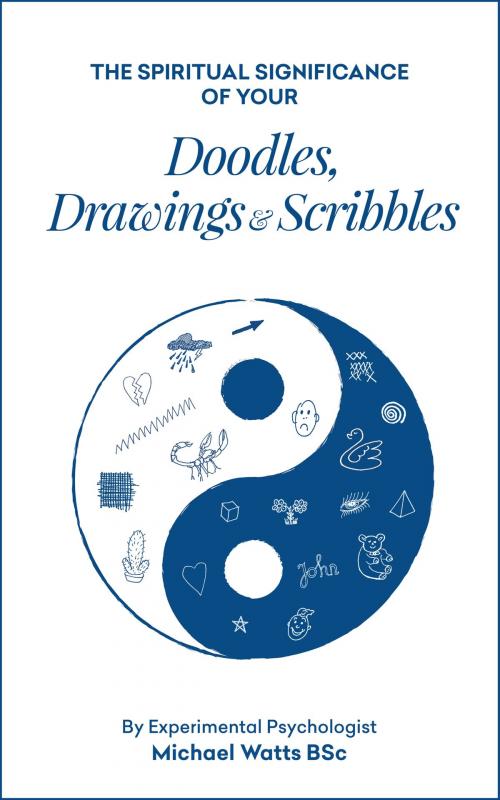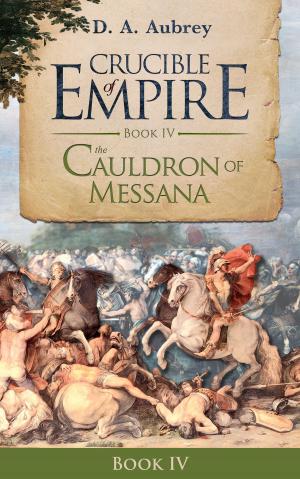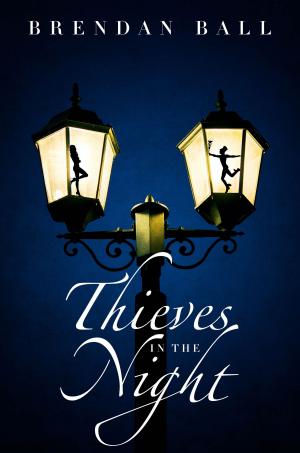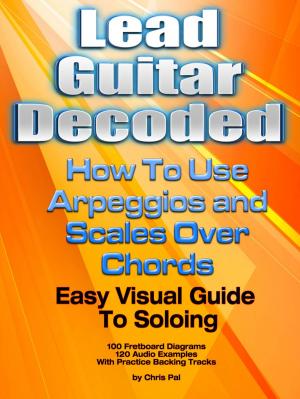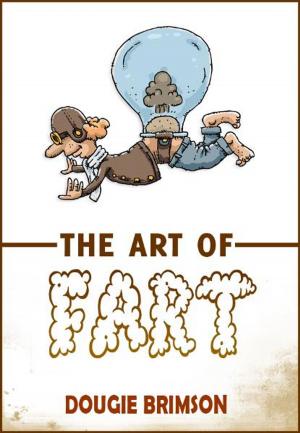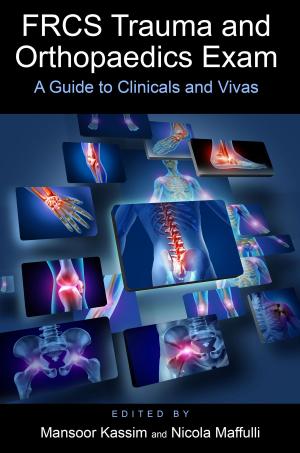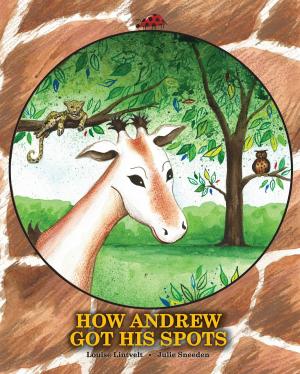The Spiritual Significance of your Doodles, Drawings & Scribbles By Experimental Psychologist Michael Watts BSc
Nonfiction, Religion & Spirituality, Occult, Divination, New Age, Health & Well Being, Self Help| Author: | Michael Watts BSc | ISBN: | 9781783015412 |
| Publisher: | eBookPartnership.com | Publication: | October 28, 2014 |
| Imprint: | eBookPartnership.com | Language: | English |
| Author: | Michael Watts BSc |
| ISBN: | 9781783015412 |
| Publisher: | eBookPartnership.com |
| Publication: | October 28, 2014 |
| Imprint: | eBookPartnership.com |
| Language: | English |
'Michael Watts contributed a highly successful doodle analysis column to Bella. Many readers and members of staff who had doodles interpreted were amazed by his uncanny accuracy. Now, with this extremely well-written book, you will be able to instantly interpret any doodle you are likely to come across. We recommend it to everybody and know that you will find it enjoyable, invaluable and easy to use.' - Bella
When faced with difficult dilemmas or decisions, doodling prevents the mind from wandering, provides an escape valve for frustration, boredom and anger, and similar to the chant of a mantra, it helps us to relax. This allows unconscious, creative ideas, insights and solutions to float to the surface so our thinking and intuition becomes clearer and more effective. Recent research indicates that doodling is also helpful in memory retention.
In addition, doodles and drawings are used by psychologists to uncover hidden or repressed emotions, desires, fantasies and fears. Freud felt that doodles (and dreams) enable the mind to express 'improper' sexual thoughts or hostile impulses in a covert and acceptable manner.
This book is the product of my eighteen years' experience as a psychologist and handwriting expert, during which time I have analysed thousands of doodles. Accuracy has been greatly assisted by interpretations of symbolic imagery derived from the research of Jung and Freud, and by feedback from clients.
The final chapter 'Therapeutic doodles', which resonates with Art Therapy, was inspired by the research of Carl Jung, who noted the calming effect of drawing mandalas, and by Rudolf Steiner, who formulated special therapeutic geometric shapes that effectively enhance self-assurance, organizational skills and concentration. Steiner's drawing exercises, which enhance motor skills and develop a feeling for form, structure, harmony and rhythm are still used in the Waldorf schools he founded, and they are helpful in anger and stress management and stroke recovery. (See www.zentangle.com for an interesting site that explores the therapeutic benefits of geometric doodling)
When faced with difficult dilemmas or decisions, doodling prevents the mind from wandering, provides an escape valve for frustration, boredom and anger, and similar to the chant of a mantra, it helps us to relax. This allows unconscious, creative ideas, insights and solutions to float to the surface so our thinking and intuition becomes clearer and more effective. Recent research indicates that doodling is also helpful in memory retention.
In addition, doodles and drawings are used by psychologists to uncover hidden or repressed emotions, desires, fantasies and fears. Freud felt that doodles (and dreams) enable the mind to express 'improper' sexual thoughts or hostile impulses in a covert and acceptable manner.
This book is the product of my eighteen years' experience as a psychologist and handwriting expert, during which time I have analysed thousands of doodles. Accuracy has been greatly assisted by interpretations of symbolic imagery derived from the research of Jung and Freud, and by feedback from clients.
The final chapter 'Therapeutic doodles', which resonates with Art Therapy, was inspired by the research of Carl Jung, who noted the calming effect of drawing mandalas, and by Rudolf Steiner, who formulated special therapeutic geometric shapes that effectively enhance self-assurance, organizational skills and concentration. Steiner's drawing exercises, which enhance motor skills and develop a feeling for form, structure, harmony and rhythm are still used in the Waldorf schools he founded, and they are helpful in anger and stress management and stroke recovery. (See www.zentangle.com for an interesting site that explores the therapeutic benefits of geometric doodling)
'Michael Watts contributed a highly successful doodle analysis column to Bella. Many readers and members of staff who had doodles interpreted were amazed by his uncanny accuracy. Now, with this extremely well-written book, you will be able to instantly interpret any doodle you are likely to come across. We recommend it to everybody and know that you will find it enjoyable, invaluable and easy to use.' - Bella
When faced with difficult dilemmas or decisions, doodling prevents the mind from wandering, provides an escape valve for frustration, boredom and anger, and similar to the chant of a mantra, it helps us to relax. This allows unconscious, creative ideas, insights and solutions to float to the surface so our thinking and intuition becomes clearer and more effective. Recent research indicates that doodling is also helpful in memory retention.
In addition, doodles and drawings are used by psychologists to uncover hidden or repressed emotions, desires, fantasies and fears. Freud felt that doodles (and dreams) enable the mind to express 'improper' sexual thoughts or hostile impulses in a covert and acceptable manner.
This book is the product of my eighteen years' experience as a psychologist and handwriting expert, during which time I have analysed thousands of doodles. Accuracy has been greatly assisted by interpretations of symbolic imagery derived from the research of Jung and Freud, and by feedback from clients.
The final chapter 'Therapeutic doodles', which resonates with Art Therapy, was inspired by the research of Carl Jung, who noted the calming effect of drawing mandalas, and by Rudolf Steiner, who formulated special therapeutic geometric shapes that effectively enhance self-assurance, organizational skills and concentration. Steiner's drawing exercises, which enhance motor skills and develop a feeling for form, structure, harmony and rhythm are still used in the Waldorf schools he founded, and they are helpful in anger and stress management and stroke recovery. (See www.zentangle.com for an interesting site that explores the therapeutic benefits of geometric doodling)
When faced with difficult dilemmas or decisions, doodling prevents the mind from wandering, provides an escape valve for frustration, boredom and anger, and similar to the chant of a mantra, it helps us to relax. This allows unconscious, creative ideas, insights and solutions to float to the surface so our thinking and intuition becomes clearer and more effective. Recent research indicates that doodling is also helpful in memory retention.
In addition, doodles and drawings are used by psychologists to uncover hidden or repressed emotions, desires, fantasies and fears. Freud felt that doodles (and dreams) enable the mind to express 'improper' sexual thoughts or hostile impulses in a covert and acceptable manner.
This book is the product of my eighteen years' experience as a psychologist and handwriting expert, during which time I have analysed thousands of doodles. Accuracy has been greatly assisted by interpretations of symbolic imagery derived from the research of Jung and Freud, and by feedback from clients.
The final chapter 'Therapeutic doodles', which resonates with Art Therapy, was inspired by the research of Carl Jung, who noted the calming effect of drawing mandalas, and by Rudolf Steiner, who formulated special therapeutic geometric shapes that effectively enhance self-assurance, organizational skills and concentration. Steiner's drawing exercises, which enhance motor skills and develop a feeling for form, structure, harmony and rhythm are still used in the Waldorf schools he founded, and they are helpful in anger and stress management and stroke recovery. (See www.zentangle.com for an interesting site that explores the therapeutic benefits of geometric doodling)
